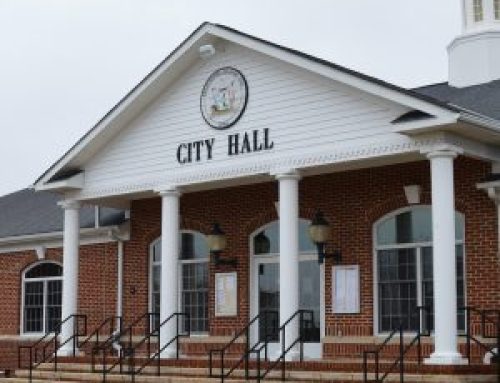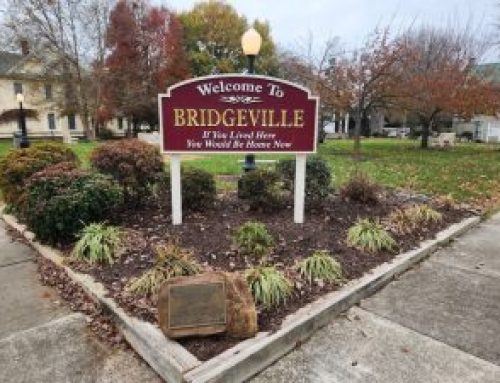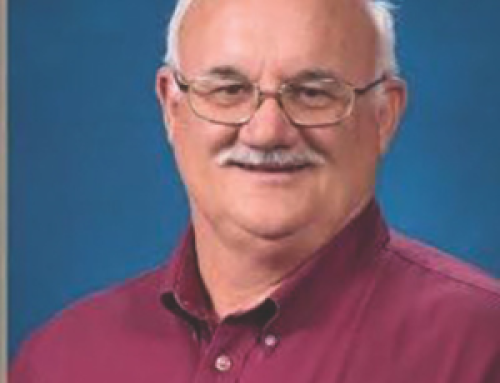The Seaford City Council opened the session with the newly organized public comment. The council listened to one local resident, Dan Cannon, and then moved on to the public hearing for a request to rezone a parcel of land located at 22347 Sussex Highway. The request of Jay Dolby was presented by building official Mike Bailey for rezoning. The property is located on the corner of Old Furnace and Route 13 and is currently farmland. The owners, Dolby Property-South, plan to make it a subdivision in the future. Councilman Dan Henderson inquired if this request requires input of the Office of State Planning and City Manager Charles Anderson informed the council that an MOU is on file and provides the city the authority to approve the changes. The rezoning was passed by council, 5-0.
Chris Simms, Principal with Smart Utility Management, presented the first reading of the ordinance to amend Chapter 6 of the municipal code of Seaford. It will increase the net metering cap from five to eight percent and would eliminate all payments made by the city for excess KWh credits to comply with Senate Bill 298, which was recently enacted. Simms reviewed the highlights of the ordinance which will open the waiting list currently in place. Simms remarked that although there are significant changes to the net metering rules and regulations in the state of Delaware, Seaford is not regulated by Delaware Public Service Commission for rates, however, the city still follows the standards. The limit was set at five percent of peak load which was met in a short time span and the state is increasing the peak load to eight percent of the wholesale peak load. The city of Seaford’s peak load is currently at approximately 20.6 megawatts and the new standards will allow 1.65 megawatts behind the meter generation. Simms indicated that a typical residential is about 10Kw and if all applicants are residential, the city could possibly add approximately 40 or more new installations.
Mayor David Genshaw inquired about the process and Director of Electric Bill Bennett explained that the list will be reviewed and the city will contact each person to ensure continued interest. At the current time, all interested parties are residential properties. Commercial properties use more kilowatt hours than residential and could use up the megawatts quickly. Anderson explained that the process is not separated by residential or commercial and it is a “first come first served” process.
Since it is increasing the net metering cap to eight percent, the state has elected to change the payments for any excess credits available at the end of the year. Therefore, if a customer produces more power than consumed, the customer would have a negative KWH balance at the end of the year. Simms said that in Seaford there is one customer in 20 who overproduces annually. City limits at this time are 100 percent and will be moved to 110 percent, which gives customers an opportunity for a credit. The state is allowing the utilities to retain any accrued credit and will go to utility and the city of Seaford for implementing this program. This means a check will not go to customer. Finally, the utility will pay the first $200 of the metering while a commercial customer is responsible for the entire new metering.
Simms remarked that there is concern how much is concentrated on one distribution circuit which is why the state added language to allow for the utility (city of Seaford) to develop rules to protect the safety and operation of the equipment. The city will use the Delmarva Power method of limiting one distribution circuit and cannot be more than 20 percent peak load on that circuit (1 mWH would be limited to 20 KW). Councilman Henderson inquired that the city is currently 6.5 so when it reaches eight percent threshold, “what happens when you have a slowdown and suddenly go up to 18.” Anderson informed the council that that scenario has already happened. Councilman Henderson asked what happens to the people on the waiting list. Anderson said the peak is evaluated every year and if the numbers change, then the list would close temporarily, “if the peak goes down, we have to accommodate those systems that are out there. We must ensure the safety and reliability of the system.”
Also presented for approval by Simms was a Net Metering Policy and System Saturation Limits document that will establish the limits, per circuit or substation, of customer owned generation interconnection to ensure the reliability, safety, protection, power quality and capacity of the city owned electric distribution system. The council voted to approve it, 5-0.
The council approved an Ordinance #2022-A1, annexing the parcel of land on the corner of road 534 and 13A. The land, located behind Lowe’s, will be recorded and will become annexed to the city of Seaford. The intentions of the owner, who has other business developments, is for a commercial development, which fits into the comprehensive plan. At the time there are no concrete plans but the owner of the property has communication with the city.
The city of Seaford, “World Class Business Climate in a Hometown Environment” is now streaming on YouTube with interviews of many local business owners on the reasons that Seaford makes perfect sense for business and growth.





